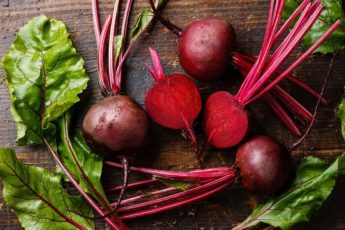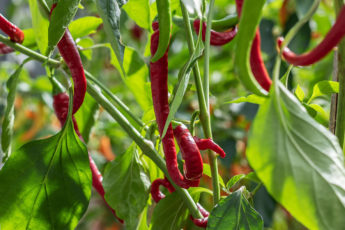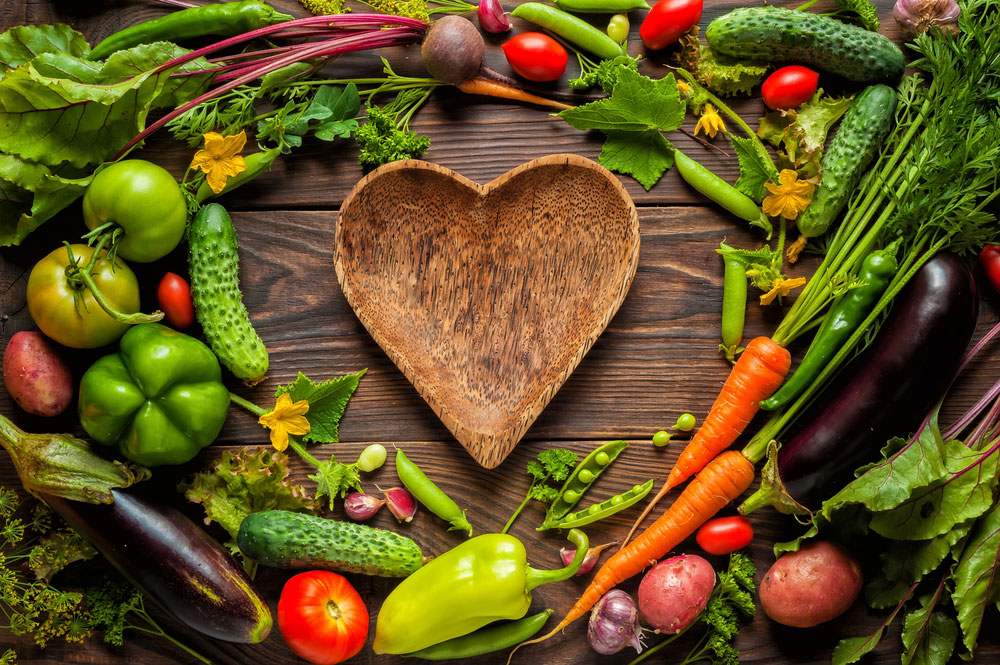
Happy National Allotment Week everybody! This week (14-20 August) is a celebration of the wonderful little gardens dotted across the country, serving up home-grown fruit and veg to their gardeners.
To mark this occasion, we’ve put together a guide to some of the more unusual fruit and vegetables you could add to your allotment crop!
Dragon Fruit
 Is there a name for a fruit any more intriguing than dragon fruit? This species of cactus is native to Central America and the islands of the Pacific. Although there are several varieties within the Dragon Fruit family, we love the white-fleshed pitahaya, which is visually distinctive, with a scaly red and green exterior, as well as its namesake white flesh, and is the most commonly cultivated variety.
Is there a name for a fruit any more intriguing than dragon fruit? This species of cactus is native to Central America and the islands of the Pacific. Although there are several varieties within the Dragon Fruit family, we love the white-fleshed pitahaya, which is visually distinctive, with a scaly red and green exterior, as well as its namesake white flesh, and is the most commonly cultivated variety.
Growing a white-fleshed pitahaya is relatively simple, under the right conditions, and produces highly nutritious fruit which tastes like watermelon, as well as a beautiful flowering cactus!
To start, make sure you plant in well-draining soil. If the roots stay wet for prolonged periods of time the fruit will suffer. With British weather being as unpredictable as it is, we’d recommend a well-lit spot outdoors, close to a trellis, or inside a large greenhouse.
Once planted, water the plant regularly. Other than this, the plant is relatively self-reliant. Being a cactus it also contains natural stores, so don’t worry about minor neglect now and then! For the fruit, there is no accurate time frame for flowering and the bearing of fruit, the general rule is that the plant will start flowering when it has reached maximum height (which can be as tall as 2 metres!)
Once fruit starts to grow, be careful about picking them. Unlike other fruits, the cactus fruit won’t continue to ripen when separated from the plant, so only take them off when they’re good and ready!
Cucamelons
 The name of the Cucamelon is relatively self-explanatory. They look like tiny watermelons, and taste like strong cucumber. Multiple grow on a single plant, and each Cucamelon is the size of a grape. Native to Central America, the Cucamelon is an extremely hardy plant that can survive most conditions with relative ease, not dissimilar from its cucumber relative. Once grown, the fruit is perfect for dropping into a Pimm’s, or as a component in a salad, and growing them couldn’t be simpler!
The name of the Cucamelon is relatively self-explanatory. They look like tiny watermelons, and taste like strong cucumber. Multiple grow on a single plant, and each Cucamelon is the size of a grape. Native to Central America, the Cucamelon is an extremely hardy plant that can survive most conditions with relative ease, not dissimilar from its cucumber relative. Once grown, the fruit is perfect for dropping into a Pimm’s, or as a component in a salad, and growing them couldn’t be simpler!
If you’ve ever grown cucumbers before, you already know how to grow Cucamelons, the technique is the same. If you haven’t grown a cucumber plant before, and would like to try out Cucamelons, plant the seeds in a greenhouse or indoors in April or early May. Allow them to establish themselves, and wait until the risk of frost has dissipated, and them move them outdoors to a sunny spot that is out of the wind, along with a few supporting sticks to scramble over. They can be planted quite close together, so multiple can be planted to yield a good crop. Other than this, they just need to be watered regularly and they’ll thrive. They are a hardy plant, so will survive well in most conditions.
Purple-Sprouting Broccoli
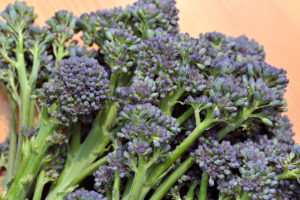 A close relative of the common Calabrese broccoli we’re all familiar with, the purple-sprouting variety is renowned for its punchy taste and nutrition. Growing Purple-Sprouting Broccoli is a relatively simple process which closely resembles the growth of cabbages or Calabrese broccoli. Simply plant the seeds in mildly acidic soil around May time, leaving about 15cm between each seed to allow them room to grow. Fertilize the seedlings after they’ve been in the ground for about a month and water the plants regularly, but do not water the developing broccoli heads – this will ruin them, so water the soil and roots only.
A close relative of the common Calabrese broccoli we’re all familiar with, the purple-sprouting variety is renowned for its punchy taste and nutrition. Growing Purple-Sprouting Broccoli is a relatively simple process which closely resembles the growth of cabbages or Calabrese broccoli. Simply plant the seeds in mildly acidic soil around May time, leaving about 15cm between each seed to allow them room to grow. Fertilize the seedlings after they’ve been in the ground for about a month and water the plants regularly, but do not water the developing broccoli heads – this will ruin them, so water the soil and roots only.
Kohlrabi
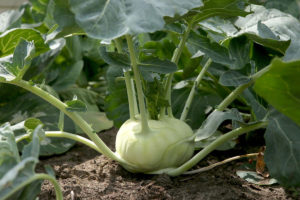 Possibly the most visually striking vegetable on this list, purple Kohlrabi has been described as resembling everything from sputnik to an octopus trying to escape the soil. It’s bound to draw attention to your allotment. The purple variety is far more striking than its white brethren, but the white Kohlrabi is considered the tastier of the two, as it is usually slightly more tender than the purple variety.
Possibly the most visually striking vegetable on this list, purple Kohlrabi has been described as resembling everything from sputnik to an octopus trying to escape the soil. It’s bound to draw attention to your allotment. The purple variety is far more striking than its white brethren, but the white Kohlrabi is considered the tastier of the two, as it is usually slightly more tender than the purple variety.
Commonly eaten in Germany, but also popular in Vietnam, Kohlrabi, despite resembling a Turnip, is actually from the brassica family, meaning it is more closely related to cabbages. As such, the method of growing is relatively similar.
Sow the seeds in loosely packed soil, and fairly close to the surface, around 6 weeks before the last frosts. Keep the seeds around 10cm apart from each other, and water them regularly. It’s also advisable to add a mulch around the plants to protect them from weeds. Beyond this, leave them to grow. Unlike other brassica, Kohlrabi isn’t too bothered by cabbage butterflies or other insects, and should be ok to grow without too much input from you.
When the round stalk is between the size of a golf and tennis ball, it’s time to harvest them. When it comes to cooking Kohlrabi, Hugh Fearnley-Whittingstall has a few tips on how to get the most out of this unusual vegetable.
Any other interesting or unusual vegetables in your allotment or garden? What would you recommend people grow? Let us know on social media.



